|
HOME: www.hiltonpond.org |
|||
|
SIGNS OF EARLY SPRING, 2012 This year we departed Hilton Pond Center on 10 March for our annual hummingbird expedition to Belize. Foliage was absent across the Carolina Piedmont and the landscape was still wintry-looking, with only a few blossoms beginning to pop on Eastern Redbuds. When we returned home just nine days later it was as if we had come back to a whole different ecosystem: The countryside was filled with pristine white dogwoods, multi-hued azaleas, yellow forsythias, and those purple-pink redbuds, while canopy trees showed a million shades of green where their delicate new leaf buds were stretching toward the sun. Yes, spring literally exploded this year at Hilton Pond and elsewhere, brought on by the warmest March in recorded history, so flowering trees and shrubs weren't the only signs of vernal activity. Insects emerged ahead of schedule and Ruby-throated Hummingbirds showed up much further north than the calendar said they should, while snakes basked in the sun and frogs trilled earlier in the month than we've ever heard them. Curmudgeonly humans may deny climate change is upon us, but watching and listening to Mother Nature will lead us to the truth--even though our unusually warm March may have nothing to do with "global warming." In any case we hope you'll enjoy our "Signs of Early Spring 2012" and consider the implications.
All text & photos © Hilton Pond Center So how warm WAS March 2012? On many days during the month our old hummingbird thermometer hanging on a shed registered significantly above the local average monthly high of 66 degrees. Furthermore, most nighttime temps stayed much higher than the average low of 40. (Those readings were confirmed by our newer and much-more-accurate Davis VantageVue wireless weather station, which reports several weather parameters and a Webcam view to Weather Underground.)
All text & photos © Hilton Pond Center A day-by-day chart (above) with readings for all of March is even more telling. The straight pale-orange line represents the historical average daytime high for the month, while the jagged pale-orange line is the record high for each day. The jagged dark-orange line is actual daily readings in March for York SC; these show temperatures for the month equaled or tied all-time record highs on six days and were at or above average on all but four. Overnight lows were also exceedingly warm, with a straight pale-blue line showing the historical average. Overnight lows in March (dark-blue jagged line) were nowhere near the record lows (pale-blue jagged line), and were below the average low only five times. Amazingly, overnight lows this year from mid-March onward were ten to 20 degrees above averge--which certainly explains the absence of frost we'd expect to see many mornings during the month. Thermometers don't lie; March 2012 was unusually warm at Hilton Pond Center--both day and night.
All text & photos © Hilton Pond Center One of the big warmer-than-normal-spring questions we've been asked this year is: "Did Ruby-throated Hummingbirds come back early?" The answer really depends on where you live. For folks on the Gulf Coast, the first migrant hummers of 2012 came back right on time (see map above), arriving the last week in February or first week in March. A similar scenario was true here at Hilton Pond, where our first male RTHU of 2012 showed up on 28 March--just a day later than our all-time early record tied last year. All these hummers left their wintering grounds in the Neotropics right when they usually do, probably taking their departure cue from slight changes in day length. They wouldn't have left Central America any earlier just because it was so warm in the U.S.--mostly because hummers don't have access to the Weather Channel; i.e., they had no way of knowing it was unusually warm up here. In more "normal" years--when it's still quite chilly in much of the U.S.--most hummers seem to take their time moving north after arriving on the Gulf Coast; in fact, researchers have found ruby-throats essentially are "held back" until average overnight temperatures go barely above freezing. In March 2012, however, weather was so mild across much of eastern North America that early ruby-throats arriving on the Gulf Coast kept right on going, ending up in states like Michigan and Indiana a full month or more ahead of schedule. Those "early birds" may gain a distinct advantage this year as "early nesters" and may even double-brood, but they run serious risk of losing eggs and/or chicks if there's the usual hard freeze the first part of April. It's worth noting, however, that first migrants typically are adult male ruby-throats looking for territories--females usually arrive a week or more later--so it may be actual breeding in Spring 2012 will occur about when it always has.
All text & photos © Hilton Pond Center Ah, Flowering Dogwoods, Cornus florida, were already in full bloom this month by the time hummingbirds arrived at Hilton Pond. If we had a hundred cameras we'd take a million photos of these quintessential spring blossoms. Don't forget, however, that the white structures above aren't blooms at all, but "bracts"--modified leaves that attract pollinators to the central cluster of much smaller and far-less-showy yellow flowers that eventually bear crimson berries.
All text & photos © Hilton Pond Center Our Red Maples, Acer rubrum, flowered long ago at Hilton Pond Center--'way back in February to be exact--but their leaves were just appearing come mid-March. Maple foliage starts out red because of anthocyanin pigments protecting the leaf's delicate new cells from ultraviolet light; these compounds soon give way to a delicate green that comes from chlorophyll. The Red Maple leaves above were speckled with yellow dots--pollen from tall oaks blooming profusely a week or more ahead of the norm.
All text & photos © Hilton Pond Center We know spring has arrived at Hilton Pond Center when our favorite old Black Ratsnake, Pantherophis obsoletus (AKA Elaphe obsoleta), puts in his first appearance. We've watched this reptile--now nearly seven feet long and two inches in diameter--since he was only a third that size. We identify him by faint markings on his dorsum and by his habit of climbing up and down a dogwood right outside our office window. This is one big blacksnake whose apparent environmental role is to keep a local Eastern Chipmunk population from getting out of hand.
All text & photos © Hilton Pond Center Another early flowering tree around Hilton Pond Center is an unidentified variety of Pear, Pyrus sp. This non-native species--brought originally from Europe by early settlers--probably grows on our property because some "Johnny Pearseed" tossed away a core or two after eating his lunch. We have several of these volunteer Pear trees; all blossom and bear hard little two-inch "stones" quickly consumed by White-tailed Deer. The five-petalled flower of the Pear leads one to think--correctly, we might add--this early blooming tree is in the Rose Family.
All text & photos © Hilton Pond Center We were amazed by all the insects flitting around Hilton Pond in this warmest March on record. We weren't surprised to see lots of early mosquitoes--they can appear here even in the dead of winter on especially warm days--but the numbers of moths and other night-flyers coming to lights were astounding. Never can we remember a March when large numbers of scarab beetles (above) were so thick they practically carpeted the back porch of the old farmhouse each morning. Lots of members of the Scarab Family (Scarabaeidae) are "dung beetles" that lay eggs in cattle droppings, so the pasture that adjoins our property was the likely source of all these early "March bugs" (not to be confused with "June Bugs," which are also scarab beetles). We're not disappointed we can't specifically identify our early spring beetle; after all, there are 30,000 scarab species in the world!
All text & photos © Hilton Pond Center Beetles weren't the only insects around the Center this week; a variety of inch-long inchworm caterpillars were crawling on all sorts of surfaces or dangling from trees by silken threads. We roused the individual in the photo above from a crevice where it apparently was getting ready to spin a cocoon. The critter looked a little worse for wear with a small wound on its anterior end, bits of frass stuck to its body by silk, and a mouth full of "terbacky juice." Its six true legs showed it was an immature insect, even though several pairs of prolegs along the abdomen and a posterior set of claspers are also used for locomotion. After we made the photo the cat crawled into another bark crevice and, we suppose, will soon go through next step in metamorphosis before it emerges as a moth later this spring. If all these caterpillars hatched early this year and aren't available when the bulk of northbound Neotropical warblers come through in April, birds may have difficulty finding enough food to fuel the rest of their migratory flight.
All text & photos © Hilton Pond Center Another sign of spring in these parts is male American Goldfinches exchanging their drab winter plumage for bright yellows and blacks that seem to please prospective mates. The second-year male above still has dingy shoulders and his back and head have a mix of feathers old and new. The forehead and crown--olive-colored during winter--will become solid jet black when his molt is complete. We don't think our goldfinches are molting particularly early this year in conjunction with higher temperatures in March, but several consecutive years of warm winters could be expected to have an effect on molt timing. (Or maybe not.)
All text & photos © Hilton Pond Center One familiar spring wildflower a week or so ahead of schedule at the Center is Cinquefoil (above). This yellow-flowered Cinquefoil resembles Wild Strawberry, but as its common name clearly states--"cinque" meaning five and "foil" meaning "leaf"--it has leaves of five leaflets rather than strawberry's three. There are many kinds of Cinquefoil--we're not sure of the species of the one above we found in the front lawn at Hilton Pond--but they're all in genus Potentilla. (P.S. Notice the five yellow petals? Cinquefoil, like the Pear, is also a member of the Rose Family. That said, there are other plant families with five-petalled flowers, so don't use just that criterion to identify plants.)
All text & photos © Hilton Pond Center It's hard to tell her gender from the photo above, but that's a female Eastern Gray Squirrel, Sciurus carolinensis, sifting through the sunflower seeds beneath one of our bird feeders. (She ignored the old Pecan nut at lower right.) When she stood straight up we confirmed her sex by the presence of two well-developed nipples on her breast, a sure sign she was nursing a litter of pups back in the nest. Mature Eastern Gray Squirrels breed twice a year, producing young in February-March and June-July. A warm March may mean more available food and higher survival rate for this month's babies, so we wouldn't be surprised to see more fledgling squirrels this year. Despite common belief, this species does not hibernate and is active year-round, particularly in morning and evening hours.
All text & photos © Hilton Pond Center The last few days of March--and about a week ahead of schedule--the first flowers began to open on a Crossvine (above) growing near the Center's old farmhouse. Crossvine, Bignonia capreolata, is in the same family (Bignoniaceae) as the Catalpa tree and Trumpet Creeper, Campsis radicans--that four-inch-long orange-red blossom we believe is the single most important hummingbird flower in eastern North America. We've got lots of Trumpet Creeper at the Center, but it doesn't bloom until mid- to late May, so the equally tubular and nectar-rich Crossvine provides nutrition for hummers during early spring.
All text & photos © Hilton Pond Center When we returned from tropical Belize to nearly-as-balmy March temperatures around Hilton Pond, we couldn't help but notice the abundance of bird nesting activity: Wood Ducks were already incubating big clutches in four boxes along the pond margin; an Eastern Phoebe was pulling moss from a bird bath to line her nest; and American Crows were carrying sticks. (Curiously, a pair of Carolina Chickadees seemed to be trying to establish squatters' rights in a box already occupied by Wood Ducks.) "Bad news" is the Carolina Wrens had constructed a messy leafy nest in the spare tire of a utility trailer brother Stan Hilton has just rebuilt for us, so despite our need to use it to haul spring junk to a recycler the vehicle will have to stay parked until chicks depart. Good news is the "spooky" female Eastern Bluebird--who for the past three years has fled her nest anytime we approached--was hard at work again, and by month's end was sitting on five incredibly blue eggs (above) in a box at the end of the driveway. Despite her incubation jitters, this bird has thrice produced one or two annual broods, so we don't doubt early warm weather this March will help her successfully fledge her first five young--an event that is just one of the many "Signs of Early Spring" at Hilton Pond Center in 2012. All text & photos © Hilton Pond Center |
|---|
 The Piedmont Naturalist, Volume 1 (1986)--long out-of-print--has been re-published by author Bill Hilton Jr. as an e-Book downloadable to read on your iPad, iPhone, Nook, Kindle, or desktop computer. Click on the image at left for information about ordering. All proceeds benefit education, research, and conservation work of Hilton Pond Center for Piedmont Natural History. The Piedmont Naturalist, Volume 1 (1986)--long out-of-print--has been re-published by author Bill Hilton Jr. as an e-Book downloadable to read on your iPad, iPhone, Nook, Kindle, or desktop computer. Click on the image at left for information about ordering. All proceeds benefit education, research, and conservation work of Hilton Pond Center for Piedmont Natural History. |
|
|
"This Week at Hilton Pond" is written and photographed by Bill Hilton Jr., executive director of Hilton Pond Center for Piedmont Natural History
|
|
|
Please refer "This Week at Hilton Pond" to others by clicking on this button: |
Comments or questions about this week's installment? Send an E-mail to INFO. (Be sure to scroll down for a tally of birds banded/recaptured during the period, plus other nature notes.) |

Click on image at right for live Web cam of Hilton Pond,
plus daily weather summary
Transmission of weather data from Hilton Pond Center via WeatherSnoop for Mac.
|
--SEARCH OUR SITE-- For a free on-line subscription to "This Week at Hilton Pond," send us an |
|
Thanks to the following fine folks for recent gifts in support of Hilton Pond Center for Piedmont Natural History and/or Operation RubyThroat: The Hummingbird Project. Your tax-deductible contributions allow us to continue writing, photographing, and sharing "This Week at Hilton Pond." Please see Support if you'd like to make a gift of your own.
|
If you enjoy "This Week at Hilton Pond," please help support Hilton Pond Center for Piedmont Natural History. It's painless, and YOU can make a difference! (Just CLICK on a logo below or send a check if you like; see Support for address.) |
|
Make credit card donations on-line via Network for Good: |
|
Use your PayPal account to make direct donations: |
|
If you like shopping on-line please become a member of iGive, through which 950+ on-line stores from Amazon to Lands' End and even iTunes donate a percentage of your purchase price to support Hilton Pond Center.  Every new member who registers with iGive and makes a purchase through them earns an ADDITIONAL $5 for the Center. You can even do Web searches through iGive and earn a penny per search--sometimes TWO--for the cause!Please enroll by going to the iGive Web site. It's a painless, important way for YOU to support our on-going work in conservation, education, and research. Add the iGive Toolbar to your browser and register Operation RubyThroat as your preferred charity to make it even easier to help Hilton Pond Center when you shop. Every new member who registers with iGive and makes a purchase through them earns an ADDITIONAL $5 for the Center. You can even do Web searches through iGive and earn a penny per search--sometimes TWO--for the cause!Please enroll by going to the iGive Web site. It's a painless, important way for YOU to support our on-going work in conservation, education, and research. Add the iGive Toolbar to your browser and register Operation RubyThroat as your preferred charity to make it even easier to help Hilton Pond Center when you shop. |
|
BIRDS BANDED THIS WEEK at HILTON POND CENTER 19-31 March 2012 |
|
|
SPECIES BANDED THIS WEEK: * = New species for 2011 WEEKLY BANDING TOTAL 2 species 34 individuals 2012 BANDING TOTAL 7 species 178 individuals 31-YEAR BANDING GRAND TOTAL (since 28 June 1982, during which time 170 species have been observed on or over the property) 125 species (31-yr avg = 65.8) 57,266 individuals (31-yr avg = 1,847) NOTABLE RECAPTURES THIS WEEK House Finch (2)
|
OTHER NATURE NOTES: --See photo essay above for signs of early spring 2012 at Hilton Pond Center. --The seventh-year female American Goldfinch recaptured this week at the Center was banded 26 Sep 2006. She ties the record for our oldest goldfinch, a male re-trapped earlier this winter. All text & photos © Hilton Pond Center |


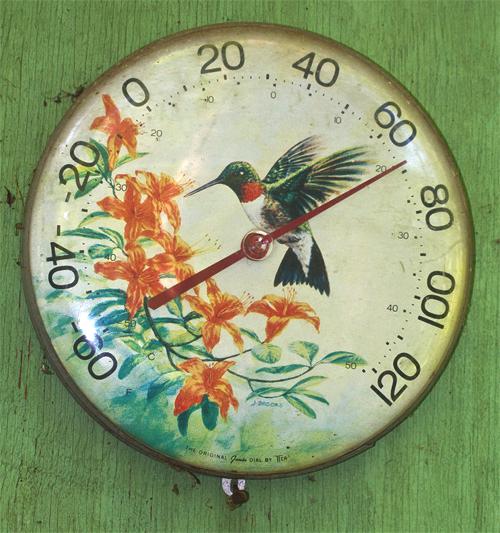
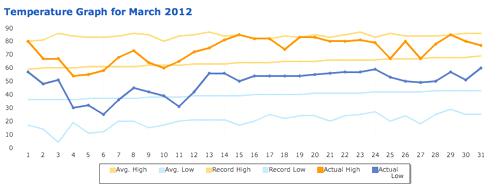

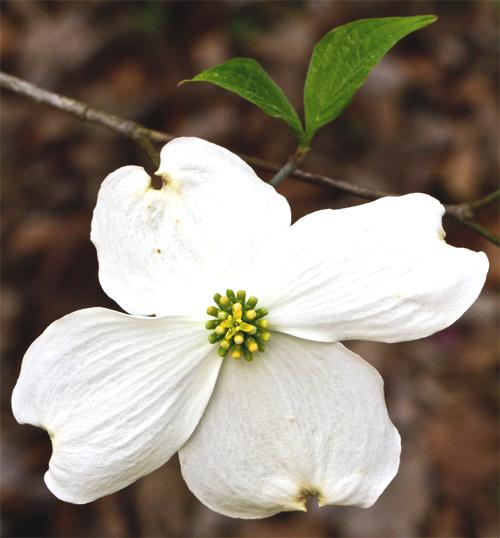
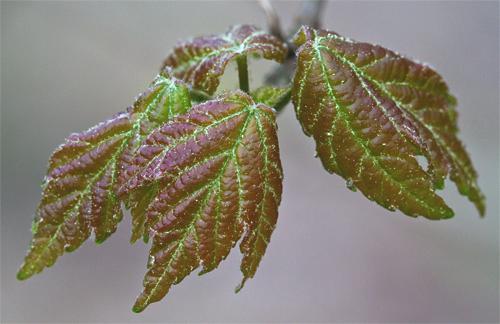
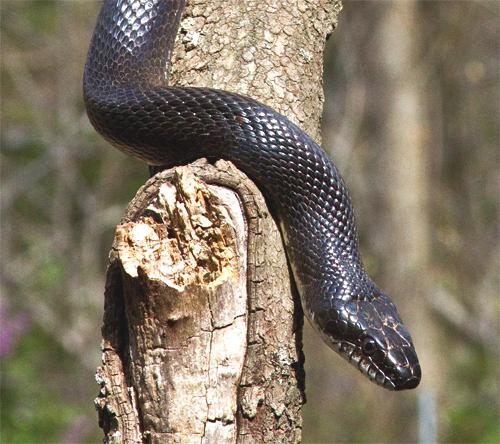
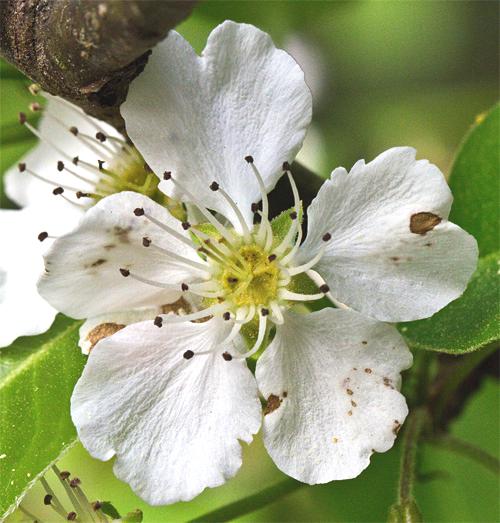
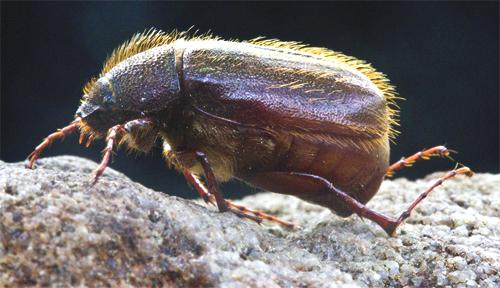
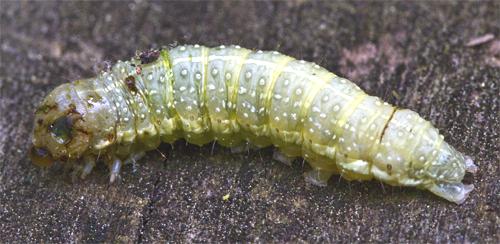

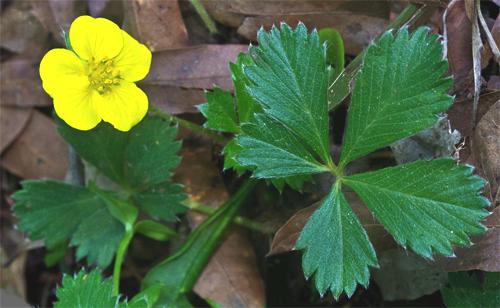
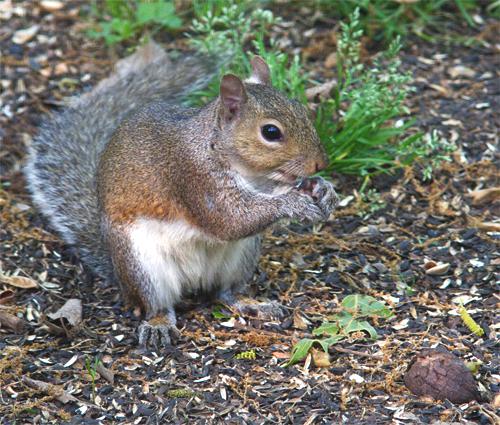
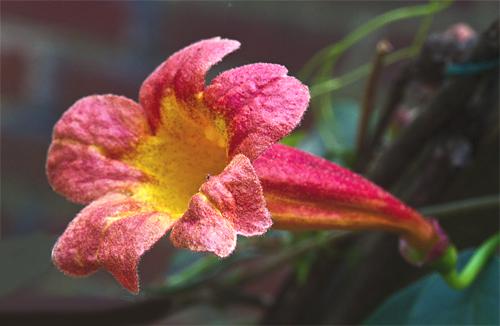
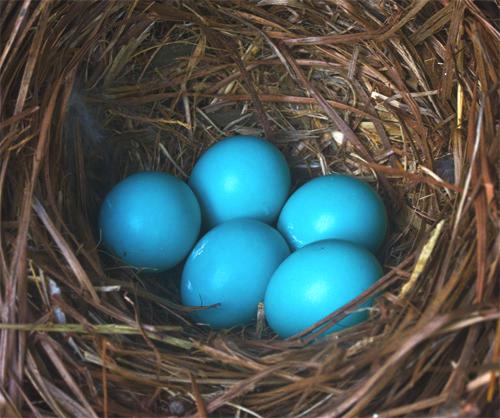

 Please report your sightings of
Please report your sightings of Oct 15 to Mar 15:
Oct 15 to Mar 15: